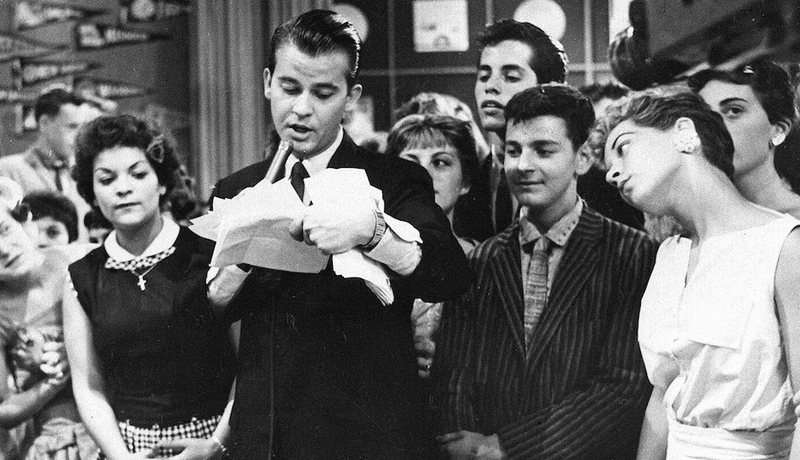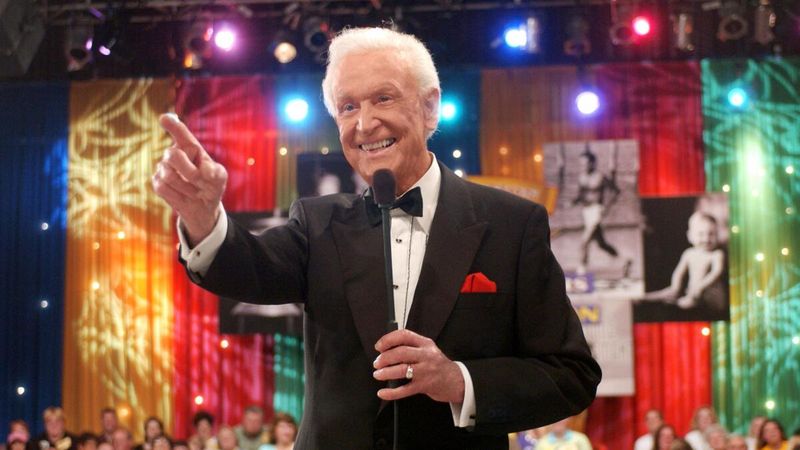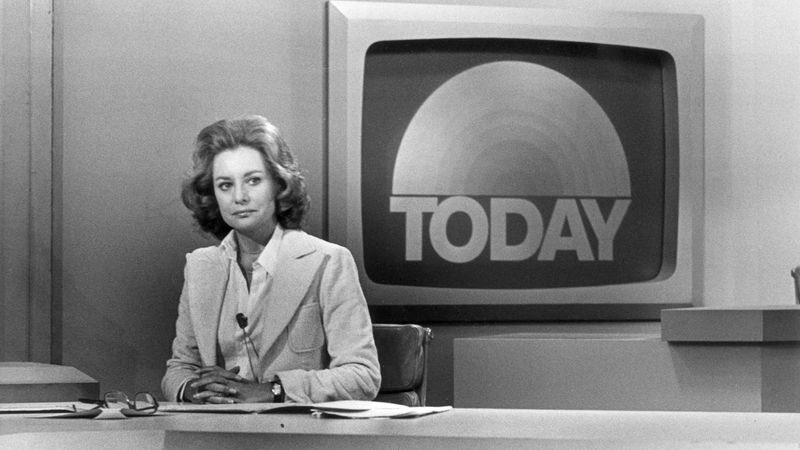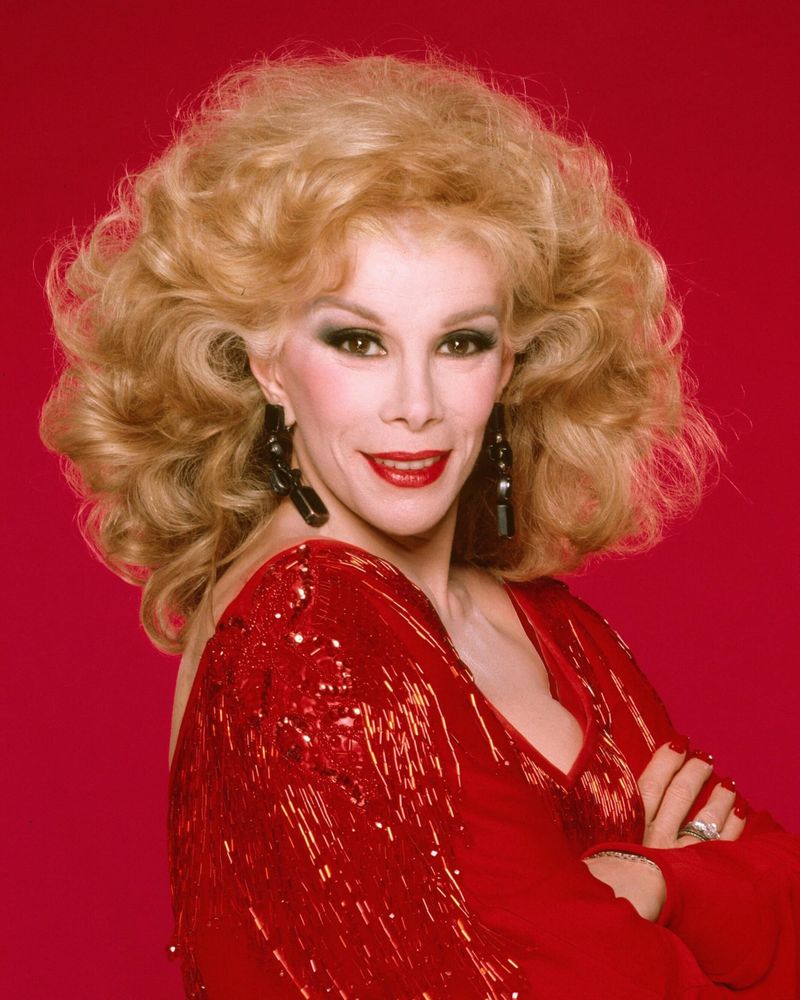Television hosts have shaped entertainment in ways few other personalities could. These charismatic figures entered our living rooms, bringing laughter, knowledge, and comfort through the small screen. From the golden age of variety shows to the heyday of talk shows, these 17 legends didn’t just host programs – they created cultural moments that defined generations.
1. Johnny Carson: The King of Late Night
With his impeccable timing and disarming smile, Johnny Carson ruled late-night television for 30 years. His trademark golf swing and Carnac the Magnificent character became cultural touchstones for millions of Americans who considered his nightly monologues essential viewing. Carson’s graceful interviewing style could make nervous guests feel instantly at ease, while his raised eyebrow could speak volumes. The Tonight Show under his reign wasn’t just entertainment—it was a national institution. Fun fact: Carson was so powerful in the industry that comedians considered their careers made if he invited them to sit on the couch after their stand-up routines.
2. Oprah Winfrey: The Queen of All Media
Starting as a local news anchor, Oprah revolutionized daytime television with raw emotional honesty rarely seen before. Her ability to connect with both guests and viewers created an atmosphere where even celebrities revealed their deepest secrets and vulnerabilities. Audiences trusted her judgment so completely that her book recommendations created instant bestsellers. Remember when she gave everyone in her audience a car? That moment became one of television’s most parodied and celebrated sequences. Beyond entertainment, Oprah used her platform to address serious social issues, proving that daytime television could be both meaningful and massively popular.
3. Dick Clark: America’s Oldest Teenager
Forever youthful Dick Clark brought rock and roll into America’s living rooms with American Bandstand, introducing generations to new music and dance crazes. His seemingly ageless appearance became as famous as his annual New Year’s Rockin’ Eve countdown from Times Square. Clark’s influence extended far beyond hosting—he was a savvy producer who understood what audiences wanted before they knew themselves. Young performers knew landing a spot on his show could launch their careers overnight. His reassuring presence during the annual New Year’s countdown became such a tradition that even after his stroke in 2004, viewers still wanted Dick Clark marking the passage of time with them.
4. Ed Sullivan: The Great Stone Face
Despite his stiff demeanor and famous awkwardness, Ed Sullivan’s variety show became the premier showcase for American entertainment. His stoic introduction of The Beatles in 1964 launched the British Invasion and changed music history forever. Sullivan’s Sunday night variety hour was must-see TV where families gathered to watch everything from opera singers to plate spinners. His stage welcomed groundbreaking Black performers when many venues remained segregated. The phrase “a really big shew” delivered in his uniquely stilted manner became his signature. Though not naturally charismatic, Sullivan’s genuine enthusiasm for talent made him the unlikely kingmaker of American entertainment for over two decades.
5. Mister Rogers: The Gentle Neighborhood Friend
Fred Rogers never raised his voice or used flashy gimmicks. Instead, he spoke directly to children about their feelings with a revolutionary sincerity that transformed children’s television. His cardigan-and-sneakers routine wasn’t just a costume change—it was a ritual that signaled to kids they were entering a safe space. Rogers tackled complex topics like death, divorce, and disability with remarkable honesty, respecting children’s intelligence. The Presbyterian minister turned broadcaster maintained the same weight (143 pounds) throughout his adult life because he considered the number symbolic—1-4-3 representing the number of letters in “I love you.” His kindness wasn’t an act; it was his life’s mission.
6. Carol Burnett: The Queen of Comedy
Tugging her ear at the end of each show—a secret hello to her grandmother—Carol Burnett pioneered female-led variety television with unbridled physical comedy. Her Tarzan yell and infectious laugh became as famous as her hilarious character sketches and movie parodies. The curtain rod dress from her “Gone With the Wind” parody remains one of television’s most iconic comedic moments. Burnett’s question-and-answer sessions with her studio audience showcased her quick wit and genuine connection with fans. Despite network executives initially doubting a woman could host a variety show, The Carol Burnett Show ran for 11 years and earned 25 Emmy Awards. Her fearless comedy opened doors for generations of female performers who followed.
7. Walter Cronkite: The Most Trusted Man in America
When Walter Cronkite removed his glasses to announce President Kennedy’s death, a nation grieved with him. His steady voice guided Americans through the turbulent 1960s and 70s with an unshakable commitment to journalistic integrity. Cronkite’s famous sign-off—”And that’s the way it is”—wasn’t just a catchphrase but a promise to viewers. His coverage of the moon landing revealed rare emotion from the normally composed anchor, as he momentarily became speechless with wonder. A Gallup poll once named him the most trusted man in America, outranking presidents and religious leaders. When Cronkite declared Vietnam unwinnable after the Tet Offensive, President Johnson reportedly remarked, “If I’ve lost Cronkite, I’ve lost Middle America.”
8. Bob Barker: The Price Is Right Legend
For 35 years, Bob Barker’s silvery voice invited contestants to “Come on down!” transforming everyday Americans into instant celebrities on television’s longest-running game show. His microphone-shaped skinny mic became as recognizable as his perfectly coiffed silver hair. Barker masterfully balanced genuine excitement for winners with gentle humor for those who missed the mark. Behind the glossy game show facade, he became an outspoken animal rights advocate, famously ending each show with: “Help control the pet population. Have your pets spayed or neutered.” At age 83, he demonstrated remarkable showmanship by recreating his famous fight scene from Happy Gilmore at the MTV Movie Awards, proving his comedic timing remained impeccable throughout his career.
9. Barbara Walters: The Groundbreaking Interviewer
“This is 20/20” introduced millions to Barbara Walters’ pioneering broadcast journalism each Friday night. As the first female co-anchor of a network evening news program, she shattered glass ceilings while facing relentless criticism about her speaking style. Walters’ interview technique—leaning forward with intense focus—extracted revelations from the most guarded celebrities and world leaders. Her annual “Most Fascinating People” specials became appointment television, while her tearful subjects became known as getting “the Barbara Walters treatment.” Despite early mockery from male colleagues, Walters commanded the highest salary in news broadcasting by the 1970s. Her determination created opportunities for countless women in television journalism who no longer had to be relegated to “women’s stories.”
10. Regis Philbin: The Hardest Working Man in Television
Holding the Guinness World Record for most hours on television, Regis Philbin’s exuberant personality and storytelling gifts made morning television feel like coffee with a friend. His trademark exclamation—”Is that your final answer?”—became a national catchphrase during the Who Wants to Be a Millionaire phenomenon. Philbin’s chemistry with co-hosts Kathie Lee Gifford and later Kelly Ripa created a comfortable familiarity that viewers cherished. His daily “host chat” segments about mundane life events somehow became compelling television through his animated delivery and self-deprecating humor. Despite his celebrity status, Philbin maintained an everyman quality that made audiences feel they truly knew him. His trademark grumpy excitement and enthusiastic hand gestures became instantly recognizable to generations of viewers.
11. Julia Child: The French Chef Who Conquered America
Standing 6’2″ with a distinctive warbling voice, Julia Child dropped chickens on the floor and kept cooking, showing perfectionism was overrated in the kitchen. Her groundbreaking PBS cooking show introduced post-war Americans to French cuisine when most considered exotic food to be anything involving pineapple. Child’s fearless approach to cooking—including mistakes—revolutionized food television. She once remarked after flipping a potato pancake onto the countertop: “Remember, you’re alone in the kitchen and nobody can see you!” Despite starting her television career at age 51, Child became an unlikely cultural icon whose kitchen now sits in the Smithsonian. Her joyful approach to cooking inspired generations to abandon recipe anxiety and embrace culinary adventure.
12. Phil Donahue: The Talk Show Revolutionary
With microphone in hand, Phil Donahue charged through his studio audience, transforming passive viewers into active participants decades before it became standard practice. His silver hair and inquisitive style brought taboo topics like abortion, AIDS, and atheism into America’s living rooms when other shows focused on celebrities and cooking. Donahue wasn’t afraid to challenge guests or amplify marginalized voices. His show provided one of the first mainstream platforms for gay rights advocates, feminists, and civil rights leaders. Though his political views often leaned left, Donahue insisted on booking conservative voices to ensure robust debate. His revolutionary approach to audience participation created the template for Oprah Winfrey and countless others who followed his pathbreaking format.
13. Joan Rivers: The Queen of Comedy and Controversy
“Can we talk?” became Joan Rivers’ catchphrase as she bulldozed through taboo topics with her raspy voice and machine-gun delivery. As the first permanent guest host of The Tonight Show, Rivers broke barriers for women in late-night comedy when the field was exclusively male. Her red carpet question—”Who are you wearing?”—transformed awards show coverage into fashion events. Rivers’ willingness to joke about her extensive plastic surgeries and personal tragedies made her vulnerability as memorable as her barbed wit. After being blacklisted by Johnny Carson for accepting a competing show, Rivers rebuilt her career multiple times through sheer determination. At 81, she was still performing stand-up comedy the week before her unexpected death, demonstrating her legendary work ethic.
14. Jim Henson: The Puppet Master of Children’s Television
Though usually hidden from view, Jim Henson’s gentle voice as Kermit the Frog made him one of television’s most beloved hosts. His Muppet Show opening song—”It’s time to play the music, it’s time to light the lights”—welcomed viewers into a world where puppets became more human than many human performers. Henson revolutionized children’s television by refusing to talk down to young audiences. His characters on Sesame Street taught letters and numbers while addressing complex emotions and social issues. Behind his characters’ felt exteriors, Henson infused profound humanity and philosophical depth. When he died unexpectedly at 53, the outpouring of grief confirmed that the man behind the puppets had touched millions of hearts across generations with his unique creative vision.
15. Alex Trebek: The Quiz Master with All the Answers
For 37 seasons, Alex Trebek’s authoritative yet warm presence guided contestants through America’s favorite quiz show with impeccable pronunciation of obscure terms. His mustache became so iconic that when he shaved it in 2001, it made national news headlines. Trebek’s subtle humor came through in his gentle ribbing of contestants who missed obvious questions. The host’s composed demeanor rarely broke, though Sean Connery impressions on Saturday Night Live parodies occasionally made him chuckle. When diagnosed with stage 4 pancreatic cancer, Trebek continued hosting while undergoing treatment, becoming a symbol of dignity and perseverance. His final episodes, filmed just days before his death, demonstrated his remarkable commitment to the show that made knowledge exciting for millions of Americans.
16. Rod Serling: The Master of the Twilight Zone
Cigarette in hand, Rod Serling’s intense stare and clipped delivery transported viewers to “a dimension not only of sight and sound, but of mind.” His compact frame and distinctive eyebrows became as recognizable as his haunting introductions to each Twilight Zone episode. Serling used science fiction and fantasy to bypass network censorship, addressing racism, nuclear war, and McCarthyism through allegory. A decorated WWII paratrooper who witnessed liberation of a concentration camp, Serling channeled his wartime trauma into stories exploring humanity’s darker impulses. Though primarily remembered as an on-screen host, Serling wrote 92 of the 156 Twilight Zone episodes himself—an extraordinary creative achievement. His opening monologues became so culturally significant that they’re still parodied over sixty years later.
17. Dinah Shore: The Singing Hostess
Blowing her famous kiss and singing “See the USA in your Chevrolet,” Dinah Shore’s sunny personality made her variety show a comfortable living room for both celebrities and viewers. Her genuine warmth created an atmosphere where guests revealed personal sides rarely seen elsewhere. Shore broke ground as one of the first female hosts to helm a successful variety program in the male-dominated 1950s television landscape. Her musical talent legitimized her with audiences, while her interviewing skills kept them watching even when she wasn’t singing. Though her variety show format eventually gave way to more focused talk shows, Shore’s influence on television hosting remained. Her signature sign-off—throwing a kiss to the audience—became so associated with her that fans would recognize her by that gesture alone.
















